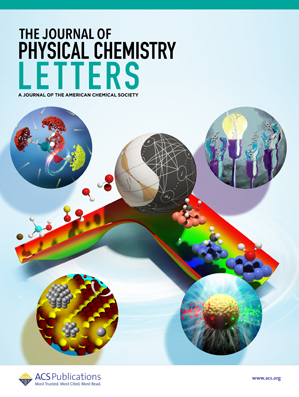High Damage Threshold Plasmonic Nanocavity Realized by Single Semiconductor Nanowires for Strong Coupling
IF 4.8
2区 化学
Q2 CHEMISTRY, PHYSICAL
引用次数: 0
Abstract
Strong coupling, as a unique paradigm of cavity quantum electrodynamics, provides an important foundation for exploring novel quantum phenomena. Under ambient conditions, exciton–plasmon strong coupling systems have developed rapidly with various exquisite nanocavity structures proposed and refined. Nanocavities based on metal nanoparticles, such as single-particle and nanoparticle-on-mirror (NPoM), offer excellent compatibility with exciton materials, making them significant platforms for studying plasmon-exciton strong coupling. However, the intrinsic losses of metallic materials severely limit the exploration of novel quantum phenomena such as low-threshold lasing and nonlinear properties. In this work, we propose and realize a plasmonic nanocavity based on high-refractive-index GaAs nanowires positioned on a Au substrate, forming a nanowire-on-mirror (NWoM) architecture. The NWoM nanocavities exhibit strong local field confinement and a significantly enhanced damage threshold, reaching 5.6×106 W/cm2. Furthermore, by integrating the nanocavity with monolayer WSe2, we successfully realized the strong coupling at room temperature. By tuning the diameters of the dielectric nanowires, we observe the characteristic anticrossing behavior and achieve a Rabi splitting of 140 meV. This study lays the foundation for future investigations into more efficient quantum behaviors and provides a new approach to designing low-loss strong coupling systems.

利用单半导体纳米线实现高损伤阈值等离子体纳米腔的强耦合
强耦合作为一种独特的腔量子电动力学范式,为探索新的量子现象提供了重要的基础。在环境条件下,激子-等离子体强耦合系统得到了迅速发展,各种精巧的纳米腔结构被提出和改进。基于单粒子和镜面纳米粒子(NPoM)等金属纳米粒子的纳米腔与激子材料具有良好的相容性,是研究等离激子-激子强耦合的重要平台。然而,金属材料的本征损耗严重限制了对低阈值激光和非线性特性等新型量子现象的探索。在这项工作中,我们提出并实现了一个基于高折射率GaAs纳米线放置在Au衬底上的等离子体纳米腔,形成了纳米线-镜上(NWoM)结构。NWoM纳米空腔表现出强局部场约束和显著增强的损伤阈值,达到5.6×106 W/cm2。此外,通过将纳米腔与单层WSe2集成,我们成功地实现了室温下的强耦合。通过调整介电纳米线的直径,我们观察到典型的抗交叉行为,并实现了140 meV的拉比分裂。该研究为未来研究更有效的量子行为奠定了基础,并为设计低损耗强耦合系统提供了新的途径。
本文章由计算机程序翻译,如有差异,请以英文原文为准。
求助全文
约1分钟内获得全文
求助全文
来源期刊

The Journal of Physical Chemistry Letters
CHEMISTRY, PHYSICAL-NANOSCIENCE & NANOTECHNOLOGY
CiteScore
9.60
自引率
7.00%
发文量
1519
审稿时长
1.6 months
期刊介绍:
The Journal of Physical Chemistry (JPC) Letters is devoted to reporting new and original experimental and theoretical basic research of interest to physical chemists, biophysical chemists, chemical physicists, physicists, material scientists, and engineers. An important criterion for acceptance is that the paper reports a significant scientific advance and/or physical insight such that rapid publication is essential. Two issues of JPC Letters are published each month.
 求助内容:
求助内容: 应助结果提醒方式:
应助结果提醒方式:


